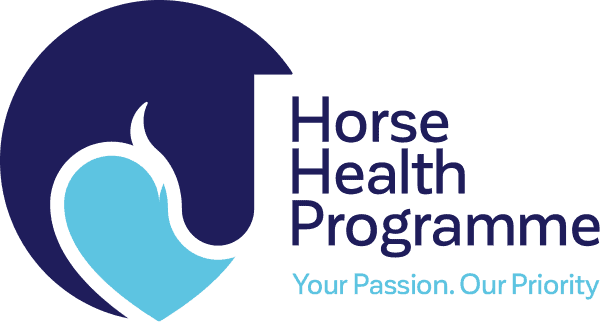Equine Herpes Virus
Equine Herpes Virus (EHV) is a highly contagious airborne disease. There are five main strains of EHV, but strains EHV-1 and EHV-4 are the most common and occur in horses world wide.
What are the different strains?
- EHV-1: This strain is most commonly associated with disease in horses and can cause respiratory disease, abortions and neurological disease. See below for more information on EHV-1.
- EHV-2: This strain rarely causes disease
- EHV-3: This is the cause of a disease called coital exanthema. It is seen as small blisters or lesions of the external genitalia. It is spread during mating, and although there is no direct effect on fertility, some stallions will become systemically unwell. The disease typically resolves in 10-14 days
- EHV-4: A cause of low grade respiratory disease and occasionally abortion.
- EHV-5: An uncommon cause of primary disease, but has been associated with a disease called Equine Multinodular Pulmonary Fibrosis. This causes chronically progressive and ultimately severe signs of lung failure.
Equine herpesvirus 1
Respiratory disease
The virus ‘circulates’ in the equine population and lives quietly (a so-called latent infection) in many horses without causing disease. Most horses are probably infected early in the life, developing a mild form of respiratory disease from which they recover. No treatment is typically needed, although anti-inflammatories such as ‘bute’ or flunixin may be useful if the disease is resulting in dullness and loss of appetite.
Respiratory clinical symptoms of EHV-1 (&4) can include:
- A high temperature
- Nasal discharge
- A dry cough
- Loss of appetite
- Reduced performance
- Lethargy/depression.
Abortion
As a normal consequence of infection with EHV 1, the infection can extend beyond the cells of the respiratory tract and enter the blood stream. It then travels throughout the body, but has two predilection sites, where it preferentially goes. One of these is the placenta where it infects blood vessels which can result in widespread disruption to the blood supply to the placenta, and ultimately abortion.
Neurologic disease (Equine Herpesmyeloencephalopathy: EHM)
The other major predilection site is the blood vessels of the spinal cord. This is where again the virus causes a blockage to the blood supply – essentially there are multiple spinal ‘strokes’. If sufficient damage occurs, then this results in dysfunction of the spinal cord. In mild cases there is only a mild weakness and incoordination, predominately in the hind legs. However, in severe cases, the horse will be unable to stand. Outbreaks of this strain are normally rare.
Both abortions and neurologic disease can occur in outbreaks as the disease is passed horse to horse. Thus it is essential to confirm the diagnosis and implement steps to prevent further spread.
How is EHV spread?
EHV is a contagious viral disease which can be spread via direct horse to horse contact (for example horses touching noses) and aerosol droplets over short distances (up to 5 metres) by coughing and snorting which can result in rapid spread through a group of horses. It can also be spread indirectly by shared equipment such as tack, feed bowls and people via their hands and clothing.
When mares miscarry due to EHV, their foal, associated fluids and discharges expelled are all sources of infection to other horses.
EHV can lie dormant in the horse following first infection, meaning they will carry the virus as a ‘silent’ infection. The horse will often appear healthy and show no signs of disease. However, occasionally the disease can reoccur at intervals throughout its life. The virus can be reactivated during stressful conditions, such as travelling, moving yards or attending a competition. The horse will shed the virus but may not show any signs that they are ill.
How do we diagnose EHV?
Nasal swabs can be used to detect the virus by PCR and also attempt to grow the virus. Blood samples can be used to do the same. Two blood samples can be obtained 10-14 days apart to look for antibodies (the bodies reaction to the virus) – a rise in the number between the two samples confirms the disease. In mares who abort, the placenta and foetus can be tested for the virus.
How do we treat EHV?
There is no specific treatment for viral diseases. Anti-inflammatories are thought to be beneficial in EHM cases as they can limit inflammation and possibly thus the damage to the spinal cord. Anti-inflammatories may also be used if a horse is inappetent or depressed. Anti-viral drugs are available, but are not thought to be helpful in most situations as by the time signs are seen, the virus has done its damage.
How do we prevent horses from getting EHV?
A vaccination is available and in the UK it is mostly used in pregnant mares to help prevent abortion. There is also a vaccination licensed to help reduce respiratory disease, and either of these vaccinations could potentially be used to limit EHM, although none of them are licensed for this use. Ultimately, like with any vaccination programme, the more horses that are vaccinated, the less disease there will be and so there is an argument for increasing vaccination against EHV beyond the broodmare population.
The mainstay of prevention, and minimising spread of the disease in an outbreak situation is to implement excellent biosecurity practises which are aimed at stopping contact between infected or potentially infected horses, and those who have not been exposed. This could be via direct (horse- horse) contact or indirect (via people handling infected and then non-infected horses, or equipment being shared etc). For further information regarding management of the disease, see the HBLB Codes of Practice, which are updated annually and freely available online.





